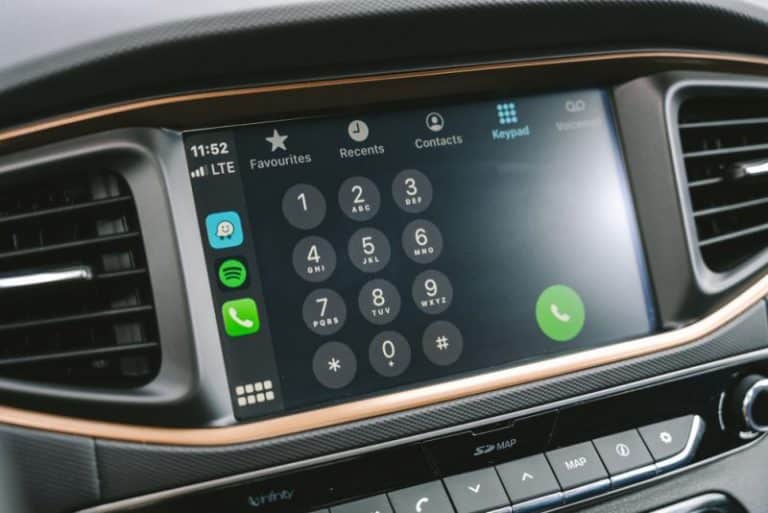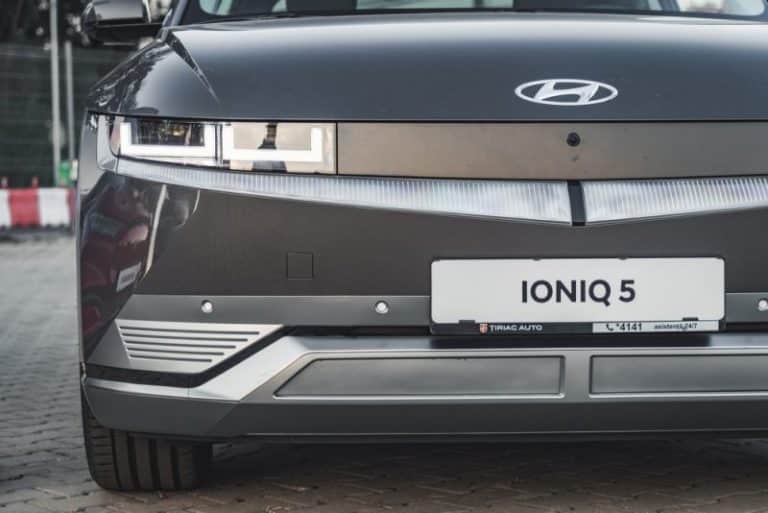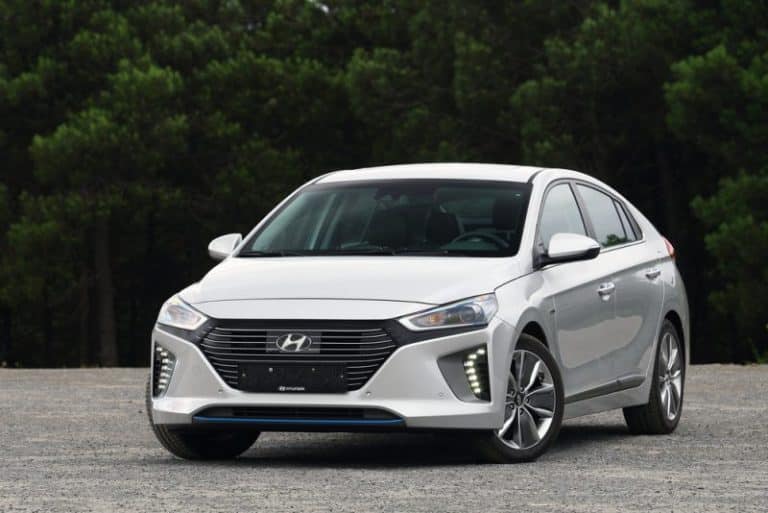Does Hyundai Elantra Use Timing Belt Or Chain? (Let’s See)
The timing belt and chain have been in cars for a long time, and both play crucial roles in the engine. Without them, you will be unable to drive your car.
This article will teach how the timing belt and chain operate and how critical they are to cars.
All Hyundai Elantra models released from 2011 to 2021 use a timing chain and an interference engine. The models from 1992 down to 2010 use timing belts and an interference engine. The timing belt and timing chain work is to continue the synchronization of the camshaft and crankshaft.
Does the Hyundai Elantra Have a Timing Belt Or Chain?

Hyundai Elantra cars use either the timing belt or timing chain. The ones from 2011 to 2021 use timing chains, while those from 1992 to 2010 use timing belts.
A timing belt or timing chain is essential for running internal combustion engines in piston engines. They are found in the smallest Hyundai Elantra sedans to the biggest SUVs.
Their work is to match the rotation of both the camshaft and crankshaft. This synchronization guarantees that the vehicle’s engine valves open and close at the right times.
The valves have to do this relative to the pistons’ positions. The crankshaft is responsible for moving the timing belt or timing chain.
The chain and belts, in turn, then move the camshafts. At this point, the camshafts then regulate when the valves open and close in the engine.
The valves allow air into the engine so that internal combustion can happen.
The opening and closing must happen at the exact time, which brings about the ‘timing’ placed before the belt and chain.
How do Timing Chains And Timing Belts Work?
The work the timing belt and timing chain perform is cyclic. The main purpose is to revolve the camshaft pulley to synchronize it with the crankshaft pulley.
Certain models use double camshaft pulleys. The timing belt/chain coordinates the pistons and the valves so they can shove cams onto the camshaft at proper times.
In many piston engines, the camshaft is mechanically attached to the crankshaft.
The crankshaft moves the camshaft using a timing belt or chain, triggering the intake and exhaust valves.
The valves let the engine inhale a fuel/air mixture and puff out the burnt gasses.
The crankshaft connects the pistons to the gearbox through connecting rods. It directs the up and down movement of the pistons into the rotation of the wheels.
The timing belt and chain facilitate the movement of the vehicle. This system is similar to bicycle pedaling.
The cams need to arrive at the summit of the cycle. The cams allow the pistons and valves to shove them down once more.
Hyundai Elantra timing belts/chains require a tensioner that helps maintain the belt’s pressure. The tensioner can be oil-pressure initiated, spring-loaded, or set by hand.
Tensioners make sure the timing belt provides adequate tension to pull each of the pulleys which drive the engine parts.
The tensioner applies the necessary control to enable smooth movement of the chain.
It prevents it from jangling and detaching from the sprockets. It also guards against failure from other components like water pumps and alternators.
The tensioner increases the resistance of the chain to wear. The belt tensioner is a system that directs the timing belt and the serpentine belt on a vehicle’s engine.
The belt tensioner, which can be hydraulic, reduces the possibility of belt slips.
Differences Between Timing Belt And Chain
The chief distinction between the two is what they are made out of. The timing belt is rubber, while the chain is created using metal chains.
Half a century ago, the timing belt was introduced into cars. One advantage the timing belt has is that it’s quieter when operating and very durable. They are also cheaper.
The material used for the belt is simple to construct and, therefore, less expensive to replace than the timing chains. They are used in cars because of their lengthy lifespan.
Most timing chains serve for nearly the same period the car lasts.
The period is double the period of servitude you get from the timing belt. Most times, the things that need replacing on the Elantra timing chain are usually the plastic guides.
Their job is to run the chain, so they deteriorate after 150,000 miles. Timing chains make a lot of noise, much more than timing belts.
Timing chains, however, have gotten quieter in recent cars. It’s advisable to replace the timing belt after every 100,000 miles.
This action prevents repairs that you might have to deal with due to a broken belt.
A broken belt is bad for the engine, and repair costs might be thousands of dollars. Replacing the timing belt can cost over $900.
For the timing chain, it is unlikely for it to break, especially if you’re replacing the plastic guides every 150,000 miles. The cost of replacing a timing chain is over $1600.
Timing chain breaks are fatal. When it breaks, little fragments of the chain fall into the engine and cause irreparable damage to it.
Replacing the engine might be the only option when this happens.

Protection Of The Timing Belt And Timing Chain
Timing chains need lubrication to maintain the smooth revolving system of the camshaft and crankshaft. On the other hand, timing belts don’t need to be lubricated.
You need to regularly service associated parts to keep your Elantra timing belt and timing chain in premium conditions.
If any of these parts break, they’ll have a huge impact on the rest of the engine components.
These are the parts that work with the timing belt and timing chain.
Inspect every one of the valves, the camshaft, crankshaft, and pistons for any indication of possible damage.
Hyundai Elantra Models That Come With Timing Belt Or Chain
- 1992 Hyundai Elantra has a timing belt on 1.6L 4 Cyl. 113 HP (4G61) interference engine.
- 1993 Hyundai Elantra has a timing belt on 1.6L 4 Cyl. 113 HP (4G61) interference engine.
- 1994 Hyundai Elantra has a timing belt on 1.8L 4 Cyl. 124 HP (4G61) interference engine.
- 1995 Hyundai Elantra has a timing belt on 1.8L 4 Cyl. 124 HP (4G67/G4CM) interference engine.
- 1996 Hyundai Elantra has a timing belt on 1.8L 4 Cyl. 130 HP (Beta I) interference engine.
- 1997 Hyundai Elantra has a timing belt on 1.8L 4 Cyl. 130 HP (Beta I) interference engine.
- 1998 Hyundai Elantra has a timing belt on 2.0L 4 Cyl. 138 HP (Beta II) interference engine.
- 1999 Hyundai Elantra has a timing belt on 1.8L 4 Cyl. 130 HP (Beta I) interference engine.
- 2000 to 2010 Hyundai Elantra has a timing belt on 2.0L 4 Cyl. 138 HP (Beta II) interference engine.
- From 2011 to 2013, Hyundai Elantra has a timing chain on 1.8L 4 Cyl. 145 HP (Nu) interference engine.
- 2014 and 2015 Hyundai Elantra has a timing chain on 2.0 4 Cyl. 173 HP (Nu) interference engine.
- 2016 Hyundai Elantra has a timing chain on 1.6L 4 Cyl. 201 HP (Smartstream G1.6 T-GDI) interference engine.
- 2017 Hyundai Elantra has a timing chain on 2.0L 4 Cyl. 154 HP (Nu MPi)
- 2018 Hyundai Elantra has a timing chain on 1.4L 4 Cyl. 128 HP (Kappa II T-GDi) interference engine.
- 2019 Hyundai Elantra has a timing chain on 2.0L 4 Cyl. 154 HP (Nu MPi) interference engine
- 2020 Hyundai Elantra has a timing chain on 2.0L 4 Cyl. 147 HP (Nu) interference engine.
- 2021 Hyundai Elantra has a timing chain on 1.6l 4 Cyl. 139 HP Hybrid interference engine.
Hyundai Elantra timing chain replacement
Conclusion
Hyundai vehicles started using timing chains in 2011, the others models before that used timing belts. The timing belts and chains help coordinate the turning of the crankshaft and camshaft.
Without them, the car wouldn’t be able to move as there would be no system to facilitate the rotation of the wheels.






